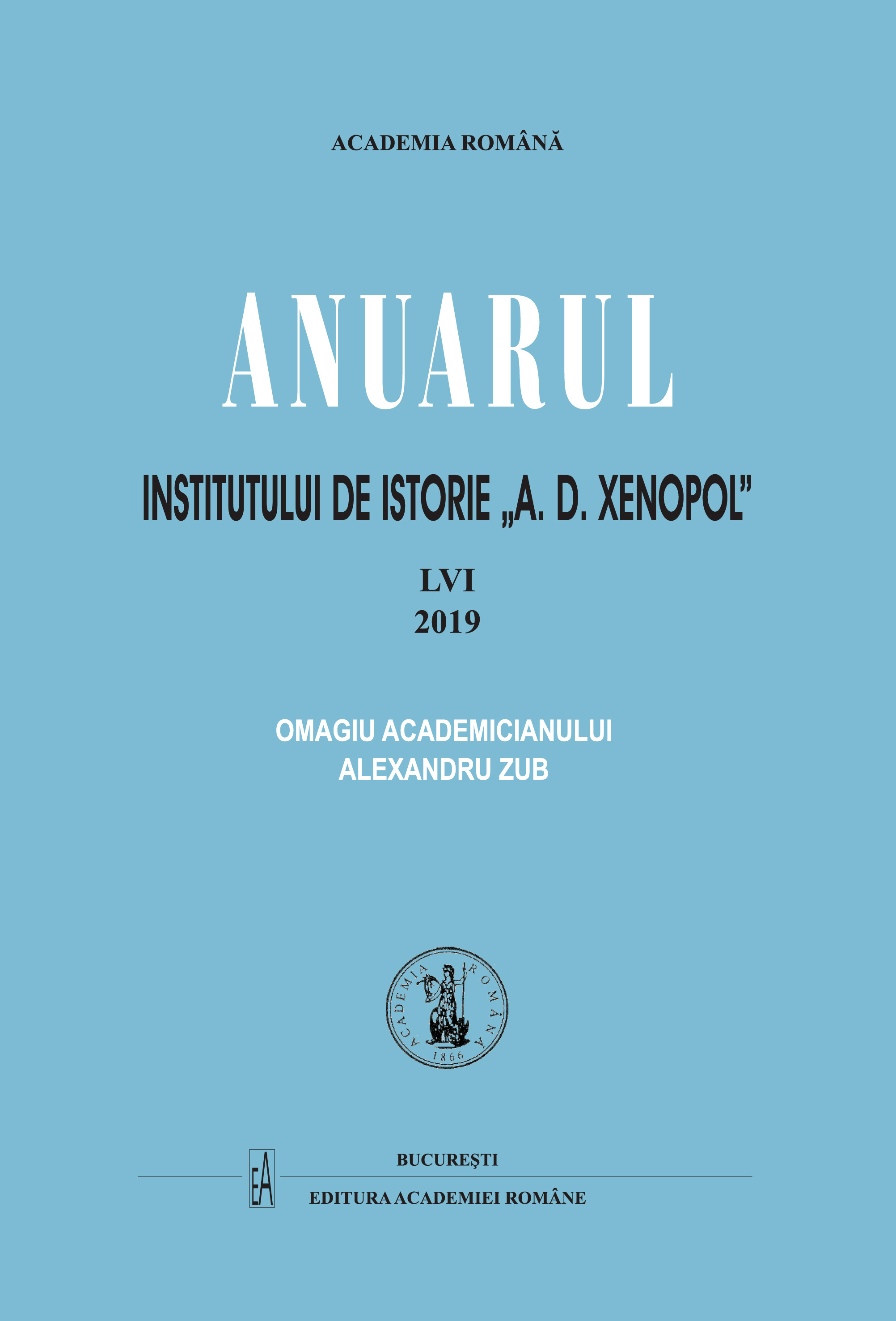O LUMINĂ ÎN HOTARUL IAȘILOR – MĂNĂSTIREA ARON VODĂ
A LIGHT AT THE BORDER OF IAȘI – THE ARON VODĂ MONASTERY
Author(s): Petronel ZahariucSubject(s): Cultural history, Social history, Modern Age, 16th Century
Published by: Editura Academiei Române
Keywords: Aron Vodă monastery (Aroneanu); Moldavia; Aron the Tyrant; Churches and monasteries in Iași; Romanian Orthodox Church; Zographou Monastery (Mount Athos);
Summary/Abstract: The Aron Vodă monastery bordered the eastern side of Iași; it was placed near the route used by the Tatars and the Cossacks in their way to the princely court, reason for which it had a turmoil-filled history. Many times, the armies of the Tatars and the Cossacks made their camps near the monastery and they stirred horror in the monastic community, because they destroyed the buildings near the church. Some events within the political history of Moldavia are related to the Aron Vodă monastery. In addition, the monastery’s church was one of the finest architectonic symbols of late 16th century. Its construction shows that our crafty builders did not just imitate or copy the buildings of the past; they actually strived and managed to bring new elements, which were adopted in Moldavia and later included in the ecclesiastical architecture of the subsequent centuries. The confusion dominating the Romanian historiography – caused by the sequencing of the two monasteries in the territory of Iași, founded by Alexandru Lăpușneanu and by his son, Aron Tiranul – was solved by Alexandru Gonța. He determined – upon a thorough study of the documents – that in the eastern part of Iași another church used to exist, different from the one we know: “there is the monastery of Greci, «founded at the foot of the hills» by Alexandru Lăpușneanu, endowed with the villages of Nicorești, Selicicani and Giurovul by the founder, then by Iancu Sasu and Petru Șchiopu, submitted by the last to the Zographou monastery at Mount Athos; and then there’s the Aron Vodă monastery, built on the hilltop called < today> Aroneanu, endowed with the villages of Averești and Rânzești by Aron vodă and submitted to the monastery of Sozopole by Radu Mihnea and subsequently by Prince Alexandru <Coconul> to Halchi.” These two places of worship were mistaken one for the other based on the documents issued by the chancelleries of Princes Ieremia Movilă and Radu Mihnea, which put together the wealth of the former “Greci” monastery and of the Aron Vodă monastery, when they were submitted to the monastery St John the Baptist in Sozopole, and subsequently to the monastery of the Dormition in the island of Halchi, near Constantinople. The Aron Vodă monastery was not one of the greatest Romanian monasteries and it did not play a very important role in the Romanian culture, but its historical importance is provided by the architectonical value of the church and by the participation of the monastic community to the economic life of Moldavia and of Iași, in particular. The last fact was due to the rather large estate put together through the joint effort of the hegoumenos and of the entire synod near the city. The monastery’s prosperity was related directly to the size and quality of the estate administered, as well as by the know-how of the hegoumenos concerning its management. Both conditions were happily met in the second half of the 17th century, when the Aron Vodă monastery experienced the wealthiest times: it comprised a vast estate and it benefitted from the wittiest hegoumeni. The great variety of the components making up the monastic estate, the vicinity to the city hosting the Moldavian throne of the villages, the mills, the ponds, the orchards and the apiaries contributed to the active presence of the Aron Vodă monastery in the economic life of Iași. After the secularisation of monastic wealth and the transformation of the church of the Aron Vodă monastery into a secular church, the priests assigned to this place of worship ensured the spiritual services for the inhabitants of the Aroneanu village and, from time to time, for the Iași inhabitants who climbed the hill to listen to their inspiring words and to enjoy the beauty of the princely foundation, dedicated to the Saint Hierarch Nicholas, the Miracle-Maker.
Journal: Anuarul Institutului de Istorie »A.D. Xenopol« - Iaşi
- Issue Year: LVI/2019
- Issue No: 56
- Page Range: 209-245
- Page Count: 37
- Language: Romanian

